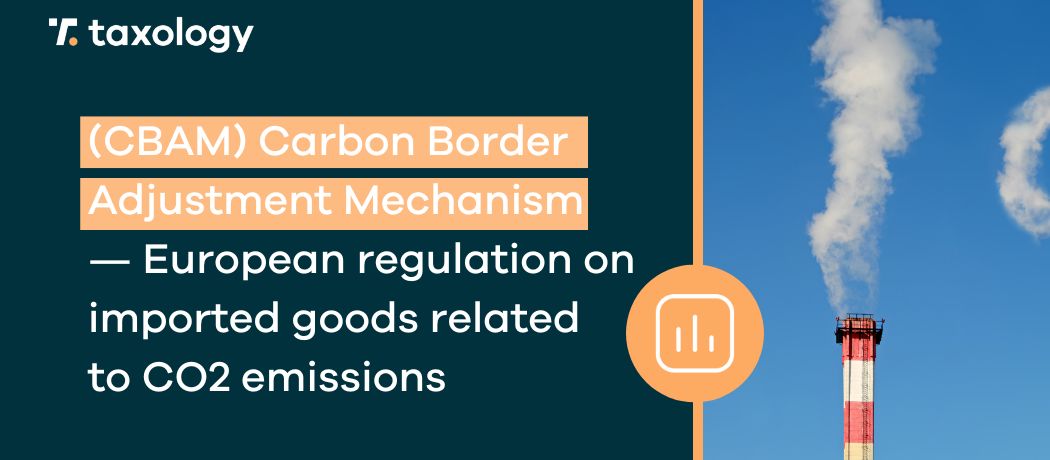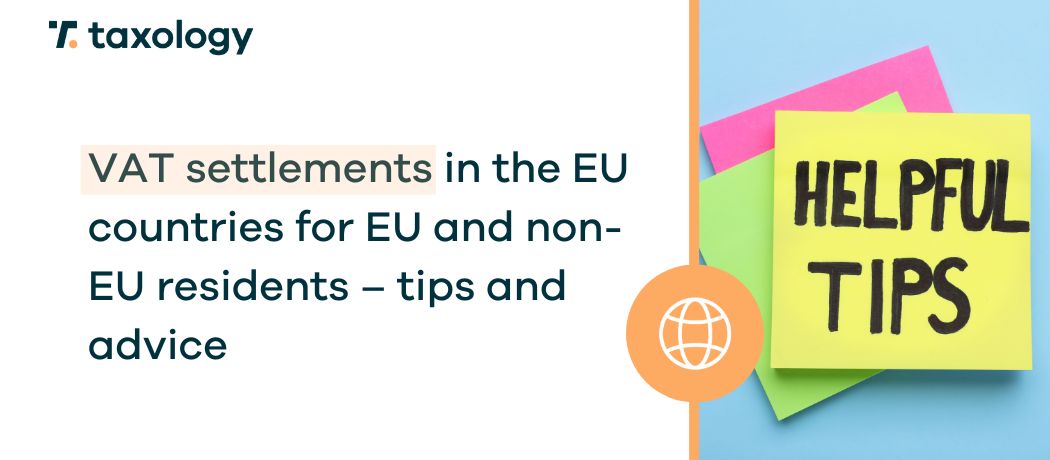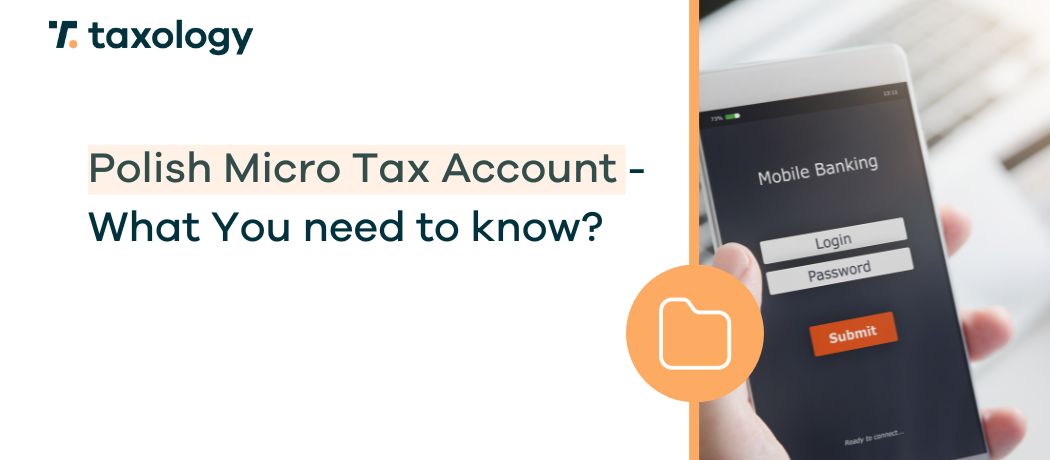VAT settlements in European Union countries are a key aspect of financial management for any business operating on the international market. Understanding the rules that govern these settlements is essential […]
Read in: 5 minCarbon Border Adjustment Mechanism (CBAM) — European Union regulation on imported goods related to CO2 emissions
- Last update:
- Published: 21.02.2024
- Read in: 5 min
Entrepreneurs often seek the most optimal and cost-effective solutions for their companies. For manufacturing firms, a common solution is relocating production outside the European Union. This not only involves lower production costs but also less stringent regulations regarding CO2 emissions reduction.
Therefore, in the last quarter of 2023, regulations concerning the CBAM carbon tax came into effect, providing authorities with a mechanism to adjust prices of imported goods from third countries with lighter emission restrictions, which we focus on in this article. So, if you’re looking for information on CBAM, we encourage you to read on!

From this article, you will learn:
- What is the Carbon Border Adjustment Mechanism (CBAM)?
- What regulations concerning the carbon border tax are the source of CBAM obligations?
- What goods are covered by the CBAM tax?
- How long does the CBAM transition period last?
- What are the new obligations related to the carbon border tax?
- Who is obligated to fulfill CBAM duties?
- How long do you have to file the CBAM report?
- When will the carbon tax be fully implemented?
- What penalties are there for failing to meet CBAM obligations?
- How does the carbon tax affect the e-commerce industry?
What is the Carbon Border Adjustment Mechanism?
The Carbon Border Adjustment Mechanism (CBAM) is the result of Regulation (EU) 2023/956 of the European Parliament and of the Council of 10 May 2023. Its effect is the introduction of the CBAM in the form of a border tax, aimed at regulating the prices of goods imported into the customs territory of the European Union, taking into account the carbon dioxide emissions associated with them.
Moreover, on 15 September 2023, the European Commission published the Implementing Regulation (EU) 2023/1773 of 17 August 2023, which specified the reporting obligations related to the carbon tax.
Let’s add that the CBAM tax is one of the three pillars of the EU’s climate neutrality plan, which is to be realized by 2050.
What is the purpose of introducing the carbon border tax?
The aim of the CBAM carbon tax is to limit the import of goods into the European Union from countries where the reduction of greenhouse gas emissions and carbon dioxide is not considered. The system assumes that importers will eventually be covered by additional fees calculated based on the amount of emission permits.
Goods covered by the carbon border tax
Goods covered by the CBAM mechanism, which are subject to new regulatory obligations, are specified in Article 2 of Regulation 2023/956 and include:
- cement,
- iron and steel,
- aluminium,
- artificial fertilizers,
- hydrogen,
- electricity.
Note that goods covered by the carbon border tax are grouped according to the Combined Nomenclature (CN). It is necessary to closely monitor the regulations.
It is not excluded that in the future the list of reported goods will be extended, for example, to plastic products.

Need help with VAT or e-commerce accounting?
The search is finished! Contact us, explain your case and our specialists will take care of the rest. Regardless of whether we are talking about accounting in e-commerce, or VAT and VAT OSS issues – registrations, settlements or declarations!
Schedule a consultationImplementing the carbon border tax — transitional provisions
The implementation of the provisions resulting from the CBAM regulation is divided into two stages, and the purpose of the transition period, as can be read on the European Commission’s website, is to serve as a pilot period and learning period for all stakeholders (importers, producers, and authorities) and to collect useful information about embedded emissions in order to refine the methodology for the final period.
New obligations of Polish entrepreneurs resulting from the implementation of CBAM — from 1 October 2023
The first of them started on 1 October 2023 and will end on 31 December 2025. During this time, importers of goods subject to the CBAM tax are required to submit quarterly CBAM reports. They must show the scale of emissions of goods introduced to the European market and the size of the import. Meanwhile, the first reporting period ended on 31 January this year, and the deadlines for the following ones are 30 April, 31 July, and 31 October. Moreover, the reporting obligations resulting from the implementation of CBAM in the transitional period can be fulfilled through the transitional CBAM register available at this address. To access it, a Polish entrepreneur must first have an account on the PUESC platform and obtain extended permission C31 “Access to the CBAM register”. The carbon tax report should contain information such as:
- the total amount of imported goods covered by the carbon border tax;
- the level of embedded emissions (emissions released during the production process) of imported goods;
- the actual total amount of indirect embedded emissions;
- the amount of greenhouse gas emission fee due in the country of origin, taking into account discounts and reductions.
Moreover, by the end of 2024, entities subject to CBAM reporting obligations can submit the CBAM report in three ways:
- full reporting according to the new methodology (EU method);
- reporting based on an equivalent method (three options);
- reporting based on default reference values (only until July 2024).
From 1 January 2025, only the first of the aforementioned methods will be accepted.
New obligations of entrepreneurs resulting from the implementation of CBAM — from 1 January 2026
The full implementation of the CBAM regulation provisions is planned for 2026, when from 1 January, importers of goods covered by CBAM will have to obtain the status of “authorized CBAM declarant”. Then, having this status, importers of goods covered by the carbon border tax will have to purchase CBAM certificates according to the amount of corresponding embedded emissions of imported goods. The purchase of CBAM certificates will be a form of tax payment.
Moreover, the CBAM regulation provisions foresee that after the transitional period, the importer’s obligations will include submitting an annual carbon tax report, for which there will be time until 31 May. It is necessary to specify which goods the annual CBAM reporting covers, and these are goods associated with the highest risk of so-called carbon leakage, which occurs when European companies relocate their production abroad to carry it out in countries with fewer restrictions on carbon dioxide equivalent emissions.
It is also worth noting that the CBAM regulations do not require the calculation of the carbon footprint.
Penalties and sanctions resulting from CBAM
It is already known that special attention must be paid to fulfilling CBAM obligations. Otherwise, entrepreneurs can expect penalties and sanctions, which will range from 10 to 50 euros per ton of unreported imported goods. Another type of penalty may be the revocation of the status of authorized CBAM declarant.
It is important to remember that to avoid penalties, one must ensure that the CBAM report is not only delivered on time but also correctly filled out.
CBAM and e-commerce
The regulations described above constitute additional formal burdens for importers in the EU. Currently, the scope of goods covered by reporting is quite limited – it mostly concerns the manufacturing industry. However, it is not excluded that in the future the described reporting duties and fees will also cover importers of goods from China containing plastic. It is therefore necessary to follow the further legislative work on the discussed regulations.
Carbon Border Adjustment Mechanism (CBAM) - Summary
Carbon Border Adjustment Mechanism (CBAM) – Summary The Carbon Border Adjustment Mechanism, shortly CBAM, is a solution introduced by the European Union aimed at limiting the import into member countries of goods associated with CO2 emissions from countries where emission standards are much lower compared to European ones. CBAM is also one of the three pillars of the EU’s climate neutrality plan.
The effects of introducing the carbon tax to date include, among others, quarterly reporting obligations, in which the scale of emissions of goods introduced to the European market will be demonstrated. Moreover, it is already known that from 1 January 2026, the import of goods covered by CBAM, such as cement, iron, steel, aluminium, artificial fertilizers, hydrogen, and electricity, can only be performed by entities that obtain the status of “authorized CBAM declarant”.
Currently, the carbon border tax does not have a significant impact on the e-commerce industry. However, it is worth following the changes that will affect it, because if a larger part of the goods is covered by it, the production costs of goods produced from them will increase, and as a result, the final product prices will also rise.
However, if you operate in the e-commerce industry, remember about VAT and accounting! If you need support in these aspects, schedule a consultation, tell us where the problem lies, and our specialists will take care of the rest! We will help both in accounting matters and those related to VAT and VAT OSS — registrations, settlements, or declarations.



